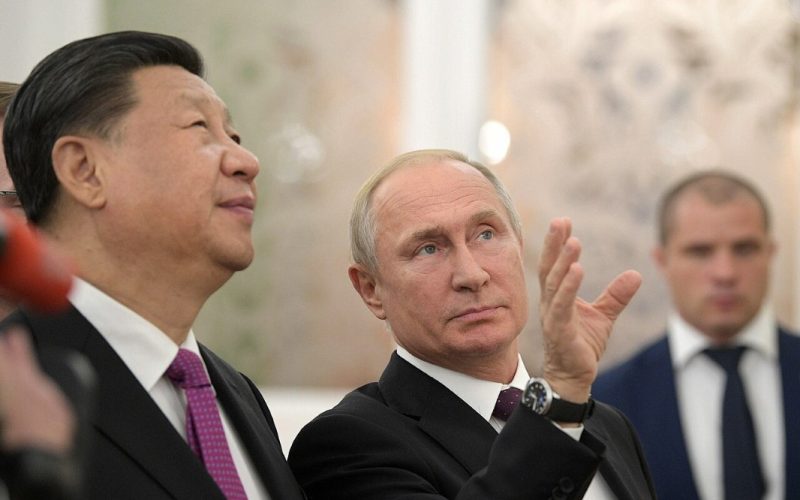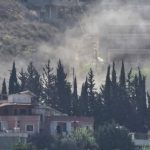he geopolitical chessboard of the Western Pacific is witnessing renewed tension, with Vladimir Putin’s Russia stepping up its military ambitions even as the United States fortifies its presence at Kadena Air Base in Okinawa, Japan. As the world’s eyes shift between Eastern Europe and the Indo-Pacific, the actions of both Moscow and Washington are shaping the contours of a new era of strategic rivalry.
Kadena Air Base: The U.S. Frontline in Asia
Kadena Air Base, perched on Okinawa Island, is the largest U.S. Air Force installation in the Asia-Pacific region. Its significance is not just in its size, but in its proximity-about 370 miles from Taiwan, a flashpoint in U.S.-China relations. This base forms a critical node in the so-called First Island Chain, a defensive line designed to contain China’s naval ambitions and project American power across the Pacific.
Recent months have seen a flurry of activity at Kadena. In early May 2025, the U.S. staged a massive “elephant walk,” lining up over 50 aircraft and missile launchers on the runway in a show of force. This spectacle was not just for optics; it was a clear message of combat readiness and deterrence, especially as China intensifies its claims over Taiwan. The 18th Wing, Kadena’s primary unit, described the event as one of the most diverse aircraft assemblies in the region, highlighting the base’s role as a linchpin in U.S. Indo-Pacific strategy.
The U.S. Air Force is currently upgrading its fighter fleet at Kadena, replacing aging F-15C/D jets with state-of-the-art F-15EX models. During this transition, a rotating cast of F-35A and F-15E fighters has been deployed to maintain a continuous and formidable presence. Additionally, the U.S. Navy has stationed MQ-4C Triton drones at the base for intelligence, surveillance, and reconnaissance missions, further enhancing the base’s capabilities.
Putin’s Pacific Strategy: More Than Just Ukraine
While the world’s attention has often been riveted by the conflict in Ukraine, Vladimir Putin has quietly but steadily expanded Russia’s military footprint in the Pacific. Russia’s “Asian pivot” is not new, but its tempo has increased in recent years. In September 2024, Putin oversaw the largest Russian naval exercises since the Soviet era, “Ocean-2024,” which spanned from the Mediterranean to the Pacific. These drills featured joint maneuvers with Chinese warships and aircraft, underscoring the deepening military partnership between Moscow and Beijing.
Putin’s strategy is clear: to challenge U.S. dominance in the Pacific, strengthen ties with China, and ensure Russia remains a key player in the region’s security architecture. Russian Defense Minister Sergei Shoigu’s announcement of new military bases on the Kuril Islands-territory disputed with Japan-further signals Moscow’s intent to assert itself in Northeast Asia. The Kurils, rich in natural resources and strategically located near vital shipping lanes, offer Russia both economic and military leverage.
Global Flashpoints: From Sudan to the South China Sea
Putin’s ambitions are not confined to the Pacific. In April 2025, news broke of Russia’s plans to establish a naval base in Sudan, on the Red Sea. This move alarmed Washington, which warned of “serious consequences” should Moscow proceed. The Sudanese base would give Russia a foothold near the Suez Canal, a chokepoint for global trade and energy supplies. It also positions Russian forces close to U.S. and Chinese military installations in Djibouti, raising the stakes for regional competition.
Military analysts suggest that Putin views Africa as a critical theater in the broader contest with the United States and China. By securing access to ports and logistics hubs, Russia aims to project power far beyond its traditional spheres of influence.
Vladimir Putin, the Architect of Russian Ambition
Vladimir Vladimirovich Putin, born in Leningrad (now St. Petersburg) in 1952, has been at the helm of Russian politics for over two decades. A former KGB officer, Putin rose through the ranks to become President in 2000. His tenure has been marked by a drive to restore Russia’s status as a global power, often through assertive military and foreign policy moves.
Putin’s leadership style is characterized by a blend of pragmatism and nationalism. He has repeatedly emphasized the importance of military strength, investing heavily in modernizing Russia’s armed forces. Whether in Syria, Ukraine, or the Pacific, Putin’s approach is to leverage military assets to achieve geopolitical aims, often challenging Western interests head-on.
Regional Effects and Future Implications
The intensification of military activities at Kadena Air Base and Russia’s Pacific maneuvers have far-reaching implications. For Japan, the U.S. presence at Kadena is both a shield and a source of tension, given Okinawa’s fraught history with American bases. For Taiwan, the bolstering of U.S. air power is a reassurance amid increasing Chinese military drills.
For Russia, the Pacific “pivot” is about more than prestige. It is a calculated effort to secure economic interests, access new markets, and counterbalance the United States and its allies. The deepening Russia-China partnership, forged through joint exercises and strategic coordination, adds a new layer of complexity to the regional security equation.
As the U.S. and Russia continue to maneuver for advantage, Kadena Air Base stands as a symbol of enduring American commitment to the Indo-Pacific. Meanwhile, Vladimir Putin’s actions-from the Kuril Islands to Sudan-demonstrate that Moscow is not content to be a bystander in the evolving global order. The interplay between these powers will shape the region’s future, with consequences that extend far beyond the Pacific.





